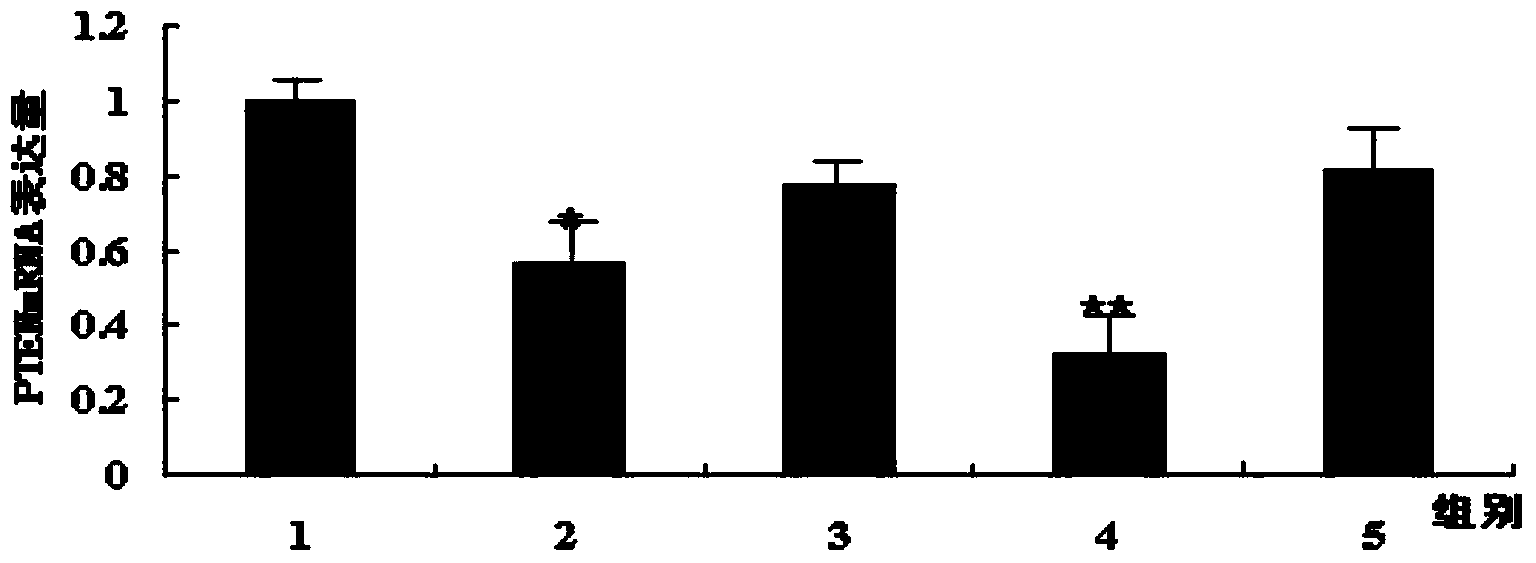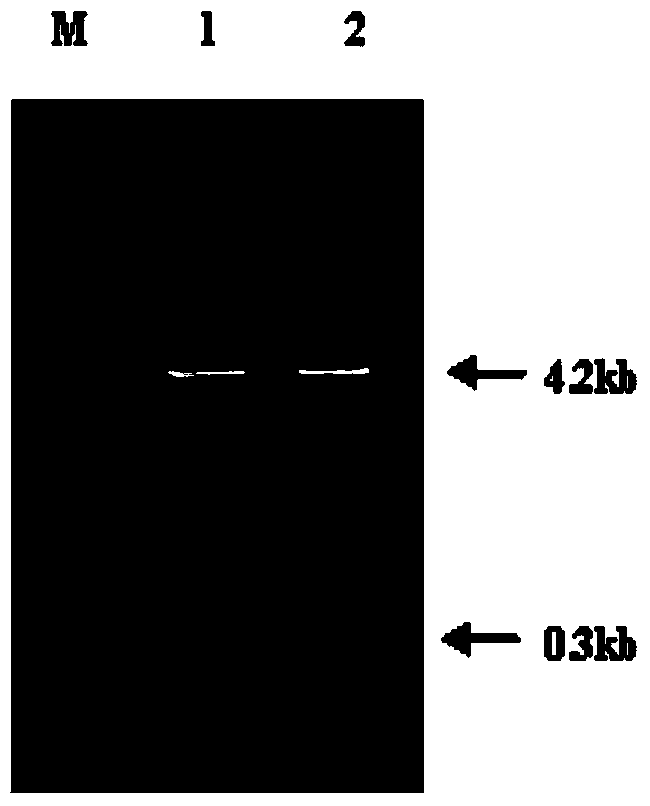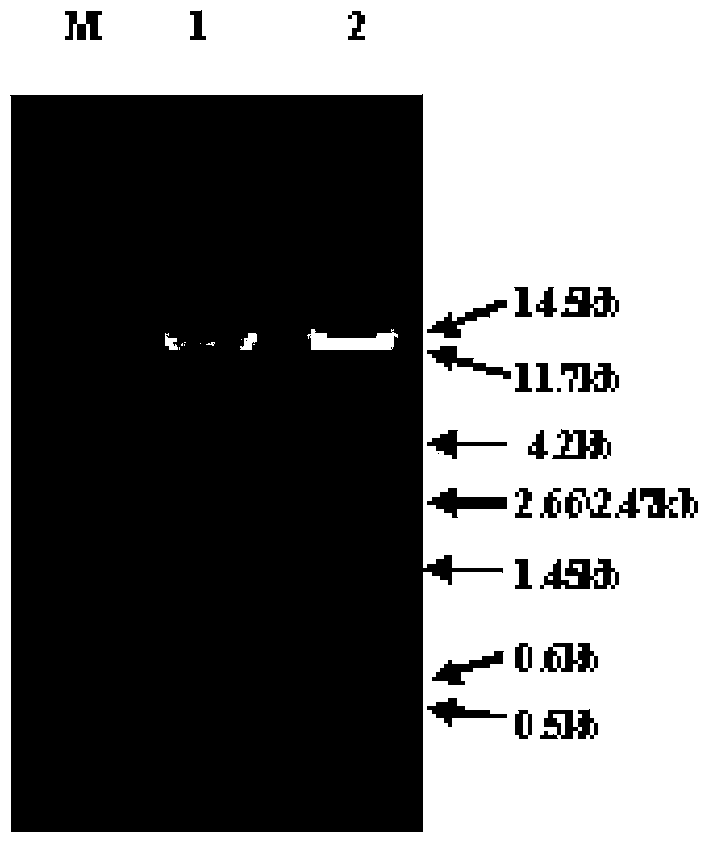PTEN (phosphatase and tensin homolog) gene interference shRNA3, and recombinant adenovirus vector and construction thereof
A technology of recombinant adenovirus and gene interference, which is applied in the field of animal molecular biology and genetic engineering, can solve the problems of gene mutation and carcinogenesis, and achieve the effect of promoting the accumulation of fat
- Summary
- Abstract
- Description
- Claims
- Application Information
AI Technical Summary
Problems solved by technology
Method used
Image
Examples
Embodiment 1
[0043] This example illustrates the design, synthesis and screening of PTEN gene shRNA.
[0044] According to the experimental principle of RNAi, four pshRNAs were designed and synthesized according to the PTEN gene, named pshRNA1 (SEQ ID No.1), pshRNA2 (SEQ ID No.2), pshRNA3 (SEQ ID No.3), pshRNA4 (SEQ ID No.4), and these fragments were chemically modified with green fluorescence to facilitate the observation of the transfection effect after transfection. Then connect the four fragments to the carrier pGPU6 / GFP / Neo respectively.
[0045] On the basis of using the improved collagenase two-step perfusion method to separate calf hepatocytes, low-speed centrifugation and adding erythrocyte lysate were used to reduce the number of red blood cells and improve the purity of hepatocytes. After cell counting, 2 mL of cell suspension was inoculated into each well of the six-well culture plate, so that the final inoculation density was 1 × 10 5 piece / cm 2 . After 4 hours, the adhere...
Embodiment 2
[0050] This example illustrates the construction of a recombinant shuttle vector.
[0051] Digest the pShuttle-Basic-EGFP recombinant shuttle vector with endonuclease KpnI / BamHI, cut the gel after 1% gel electrophoresis, and recover the target gene fragment of about 4.2Kb vector, because prolonged ultraviolet irradiation may damage DNA, so this step Electropherograms are not stored. The specific enzyme digestion system and reaction conditions are shown in Table 1.
[0052] Table 1 Shuttle plasmid digestion system and reaction conditions
[0053]
[0054] The original plasmid pGPU6 / GFP / Neo-PTEN-shRNA3 was double digested with KpnI / BamHI, after 1% gel electrophoresis, the target fragment was cut out under ultraviolet light, and the DNA gel recovery and purification kit (column centrifugal type) was used. (Refer to the instructions of the kit for specific steps, which are omitted here) Steps such as recovery and purification, the target gene fragment (U6+PTEN-shRNA3) of abou...
Embodiment 3
[0061] This example is used to illustrate the enzyme digestion identification of the recombinant shuttle plasmid.
[0062] Use KpnI / BamHI (interfering recombination shuttle plasmid) endonuclease to identify the recombinant shuttle plasmid, and the expected results are: negative clone of interference recombination shuttle plasmid: a band of 4.2 kb, and positive insert clones are 0.3 kb and 4.2 kb Kb two bands. The enzyme digestion identification system and reaction conditions are shown in Table 4. After enzyme digestion, 1% agarose gel electrophoresis was taken, and the results were as follows: figure 2 shown.
[0063] Table 4 KpnI / BamHI enzyme digestion recombinant shuttle plasmid enzyme digestion identification system and reaction conditions
[0064]
PUM
 Login to View More
Login to View More Abstract
Description
Claims
Application Information
 Login to View More
Login to View More - R&D
- Intellectual Property
- Life Sciences
- Materials
- Tech Scout
- Unparalleled Data Quality
- Higher Quality Content
- 60% Fewer Hallucinations
Browse by: Latest US Patents, China's latest patents, Technical Efficacy Thesaurus, Application Domain, Technology Topic, Popular Technical Reports.
© 2025 PatSnap. All rights reserved.Legal|Privacy policy|Modern Slavery Act Transparency Statement|Sitemap|About US| Contact US: help@patsnap.com



